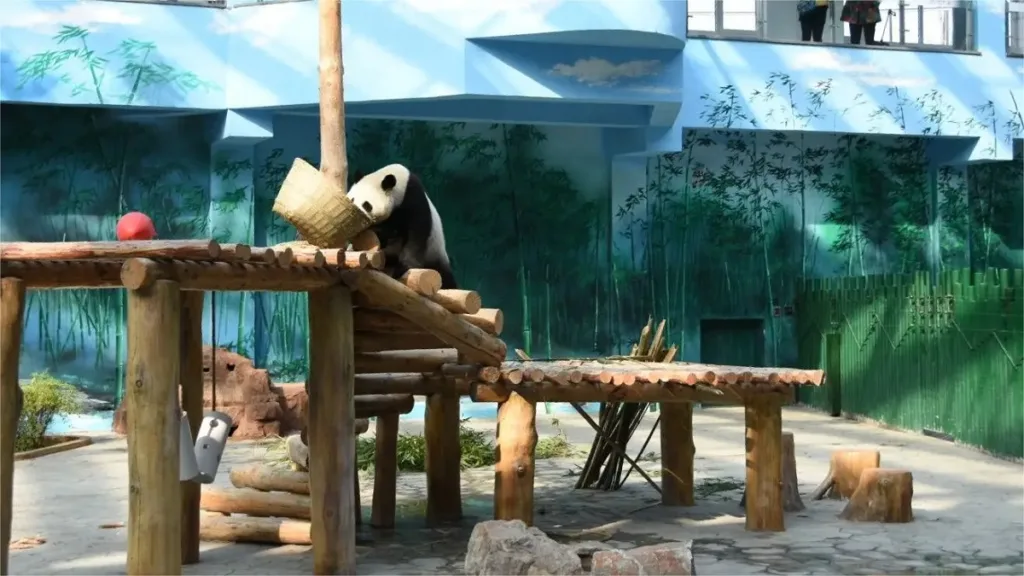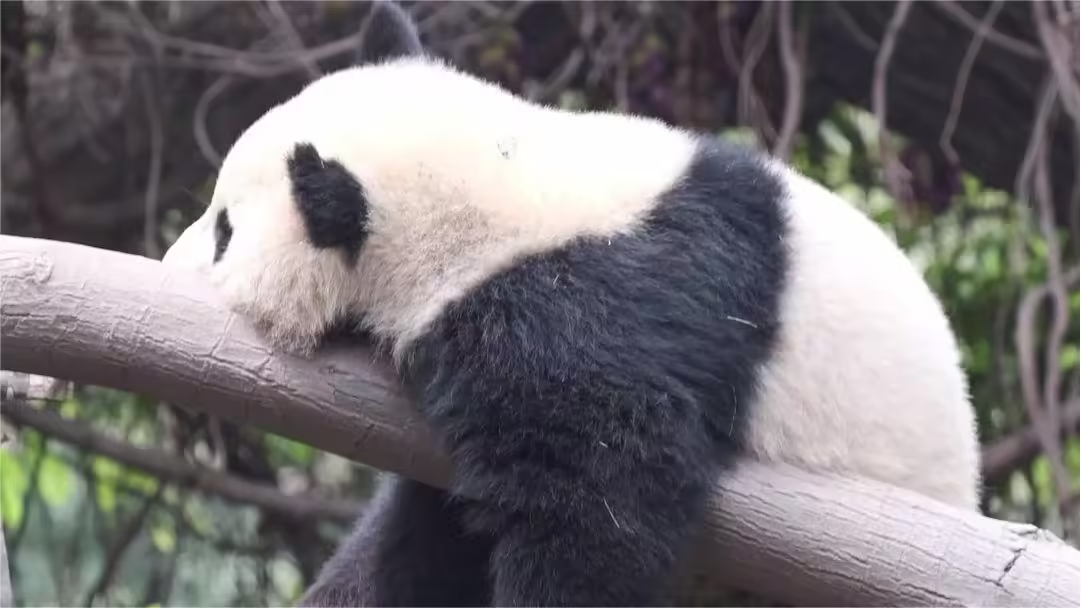In contrast to the vast and ecologically diverse wild habitats, the living environment of captive giant pandas can be relatively monotonous and dull. To address these limitations and enhance their well-being, specialized institutions implement various enrichment strategies to simulate the natural conditions as closely as possible.
Environmental Enrichment: This involves modifying the pandas’ living space to include elements that mimic their wild habitat. This can include adding more bamboo, vegetation, water sources, rocks, and climbing structures. These additions help create a more dynamic and engaging environment, allowing pandas to exhibit natural behaviors such as foraging, climbing, and exploring.
Cognitive Enrichment: To stimulate the pandas’ mental activity and curiosity, caregivers introduce novel objects and toys into their enclosures. These items, which are frequently rotated, may include straw-filled burlap sacks, tree stumps, and other interactive elements. The aim is to encourage problem-solving, exploration, and play, which can help prevent boredom and promote psychological well-being.
Food Enrichment: This aspect focuses on diversifying the pandas’ diet and feeding practices. By varying the types of bamboo offered, providing bamboo shoots, and preparing special treats like cakes, biscuits, and ice cream, caregivers ensure that the pandas have a varied and stimulating feeding experience. This not only meets their nutritional needs but also encourages natural foraging behaviors and keeps them engaged during meal times.
These enrichment practices are essential for enhancing the quality of life for captive giant pandas. They help to replicate the complex stimuli and challenges of the wild environment, allowing pandas to express their natural behaviors and maintain their physical and mental health. By creating a more stimulating and varied environment, these measures ensure that pandas can live a more fulfilling, healthy, and enjoyable life in captivity.




